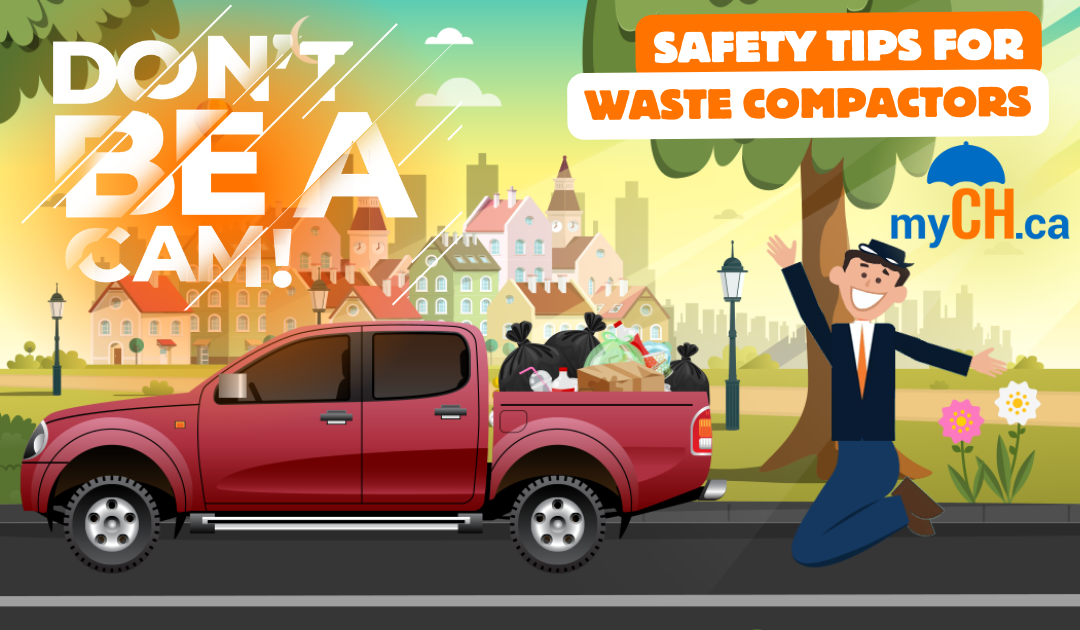In our most recent LinkedIn blog, Campbell & Haliburton’s main man Cam got into a little bit of trouble. What did he do? Well, he didn’t speak to his insurance broker before he added a waste compactor to the back of his truck… What should have he done? The first step was probably not installing a waste compactor to his truck, however, using any sort of compactor requires adhering to safety rules and provisions. Therefore, in this blog, we’re going to fill you in on some important WSPS safety tips for waste compactors!
Safety Procedures When Using Waste Compactors
All those working with waste compactors must be trained in identifying hazards and the safe operating practices for the make and model of the compactor in use. Workplace Safety and Prevention Services (WSPS) provides the following safety procedures when working with industrial waste compactor systems:
WSPS’s 16 Important Safety Tips
1. Safety Label Review
Review all safety labels on the machine and provide readable warning signs in the area surrounding the compactor.
2. Load Limits
Know which materials can be compacted and which ones cannot. Further, always abide by compactor load limits!
3. Consistent Compacting Practices
Compact materials every time there are materials put in the compactor.
4. Communicate
Let someone know when the compactor will be in use.
5. Operate Compactors Cautiously
Never open the door of the compactor when in operation.
6. Keep Your “Guard” Up
All guards should be in place during operation.
7. Do Regular Inspections
Regularly inspect the compactor and report any defects, broken parts, or potential hazards.
8. Never Operate During Repairs
Do not use the compactor should any repairs be required.
9. Follow Manufacturer Protocols
Ensure manufacturer’s instructions are followed for maintenance and repair, and no one should attempt servicing the compactor unless trained and authorized.
10. Always Wear PPE
Personal Protective Equipment (PPE) should be worn, including gloves, safety glasses, ear plugs, hard hats, non-slip shoes, and safety goggles.
11. Secure Personal Items
Secure personal items so they cannot fall into the compactor.
12. Have The Proper Tools
Only a specially designed hand tool should be used for clearing jams or moving material within the compactor.
13. Lockout-Tagout Procedures
Lockout-Tagout procedures must be in place to service, inspect, clean, or maintain the compactor.
14. Safe Routine Inspections
Routine inspections must be conducted only after all interlocks and emergency stop devices are enabled.
15. Machine Off When Not In Use
The machine must remain “off” when not in use.
16. Spill Cleanup
Ensure the area around the trash compactor is clear of any obstacles or tripping hazards. Clean up spills immediately.

Don’t Forget
Safety can only be assured by being alert to the dangers of working with waste compactors and adhering to safety rules!

